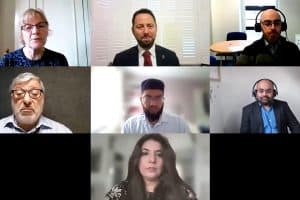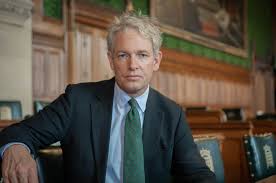By Ruth Peacock
Safeguarding people within religious groups from abuse never seems to be out of the headlines, with numerous stories of religious leaders abusing people over decades and individual cases of abuse silently covered up.
But the wider problem of abuse and harm within religious groups and cults is not a recent concern for the educational charity Inform, which launched 35 years ago at the height of stories about the Moonies (the Unification Church) and the Children of God (now known as the Family International), when young people were scooped up by strange new sects.
Its work involves informing people about new religious movements. But its role is expanding, as abuse is seen as an issue not just confined to “cults” but found in groups within established religious organisations.
A “cult” is now often described as a “high-demand group” and the kind of harmful behaviour that typifies this label can be found anywhere, typically with unquestioning obedience to leaders; passionate belief they are right; aspects of ‘coercive control’ such as emotional, financial and social pressures; physical and social separation from the world ; separation of children from parents; and financial control with high ‘exit costs’ to leaving.
The issue so concerned Colin Bloom, the UK Government’s outgoing independent faith engagement adviser, that he recommended the government should fund a programme supporting people who leave these groups.
In July, Inform ran a one-day seminar bringing together academics, supporter networks and survivors, to sketch out this proposal.
Some of the speakers joined a Religion Media Centre briefing, chaired by Rosie Dawson, to discuss what the programme might look like and examine the needs that it will seek to address.
Bloom’s recommendation
Colin Bloom’s report, Does the Government Do God? has 22 recommendations, one of which says: “Government should fund a programme that supports vulnerable people to leave high-demand groups, high-control movements (often referred to as cults) or religious groups.”
Inform’s honorary director, Dr Suzanne Newcombe, told the briefing that the programme was appropriate and needed: “Issues of harm and faith communities are of concern to constituents and they are in the headlines from time to time.”
But the content of such a programme relies on understanding the various harms experienced, and the variety of ways they engage with groups and re-evaluate their experiences. The issues are complex and unlikely to be satisfactorily addressed by only one agency.
Powerful leaders
Power of the leader is crucially important. Justin Humphreys, chief executive of safeguarding at the organisation Thirtyone:Eight, pointed to the power of charismatic leaders, with an additional layer of complexity within an environment of faith, belief, religion and spirituality.
“What we often find is that a charismatic leader will place themselves as a figure to not be challenged, that they are hearing directly from a divine entity — God,” he said.
Leaders, more often than not, have fallen into patterns of harmful behaviour rather than setting out with the intention of causing harm to individuals. Those who cause intentional harm are in the minority.
There are many types of power in high-demand environments:
- Reward-based power rewards compliance
- Coercive power influences people to think differently
- Legitimate power is gained by status
- Knowledge power holds sole access to information, and
- Relational charismatic power persuades people you are worth following.
Understanding these power models can help a person see the power dynamics for what they are and help establish less harmful organisational and interpersonal dynamics.
Power can trip into spiritual abuse and Mr Humphreys said leaders often moved on a spectrum of healthy to harmful encounters: “There will be those who genuinely believe that the way they are communicating their belief, their understanding of sacred text, is the truth and is helpful. And they are not sufficiently attentive to the harmful impact that both the message and the way the message is communicated is impacting the lives of individuals.”
Tenzin Peljor, a Buddhist teacher at Tibet House Germany, explained that in his faith, a teacher can isolate themselves to be the single sole power in that group, imbued with authority over books and texts. “If you see any fault with the teacher, [you might be told] it’s the fault of your mind, it’s your projection, and then you get totally lost,” he said.
Vulnerability
The panel discussed how vulnerable people fell prey to cult-like groups. Several of the participants stressed that everyone can be vulnerable to certain unhealthy power dynamics at points in their life where they are under stress or undergoing important transitions.
Some join groups with unhealthy power dynamics because they are approached at a time when they are open for change, questioning their lives and values and being open to anything.
Tenzin Peljor, who writes a blog on controversy within Buddhism, explained that people starved of love in early life seek acceptance and cults can give a lot of attention, or “love-bombing”. It was also suggested that others are simply naïve, have no knowledge of the group but assume it is sound because of its wider affiliations, and then get drawn in.
Mr Humphreys emphasised often individuals became vulnerable by their environments and the cultures that underpinned them.
Belonging and leaving
Sam Downs, head of intervention support at Info-Cult, the Centre for Assistance and for the Study of Cultic Phenomena, based in Montreal, said many cult-like groups exerted pressure on members to think of themselves as separate from society, creating an “us and them” mentality, people who resisted the world.
Researchers have observed methods of control in high-demand groups that ensure people stay. Dr Newcombe said these can include ‘gaslighting’ (denying people’s experiences), financial control, and other aspects of coercive control.
Many groups are attractive because they provide meaning and purpose to life, a social support network and meet basic physical and financial needs. Dr Newcombe said: “The more enmeshed you are, the harder it is to say, ‘I’m going to abandon all this’.”
Not everyone leaves. “Some want to leave and never come back. But others want to create change from within the organisation and reform the culture. And others have a kind of intermediary position, or have grown up within a group and can’t quite leave the language with which they’ve been brought up.”
The choice to stay or go depends on how the group responds when abuse is highlighted, Tenzin Peljor said. Cruelty against survivors of abuse could be hard and turn to anger, he said, with deep hatred towards religion and authority. When this happens in Buddhism, only a few stick with it. Among the cases he knew, some changed religion, and some had tried to find spirituality on their own.
He left a community after writing about sex abuse and was ostracised. He was one of the few who stayed and he is still a monk. He put this down to support from friends who put him up and understood his story. He also benefited from information by a Harvard doctor who helped him to understand distortion, indoctrination and gaslighting.
Creating Healthier Cultures and Relationships
Many of these groups have a vision of transforming the world for the better, which is what attracts people in the first place. What is needed is to create a healthier culture within them, according to Mr Humphreys.
Thirtyone:Eight offers ways of creating cultures that prevent many of the dynamics listed above, in some cases linking change to their vision of a better world.
He believed that safeguarding had become a bureaucratic process, and while policies and procedures were important, “what we’re finding is that the culture that sits beneath or around all of those things has not been sufficiently looked at. The culture is really not sufficiently embedded, understood. It isn’t modelling safer behaviours; it is allowing shadow practices and beliefs to take root.”
A sign of a healthy relationship with a group, Dr Newcombe said, was “having outside interests, having other people to talk to, having other sources of self-worth and identity”.
What sort of support?
Dr Newcombe said each individual leaving these groups will have unique needs. The support needed included a need for accurate and in-depth information, basic living requirements, new peer support networks and a safe space for personal reflection, such as in counselling.
Mr Downs spelt these out: “If a person is freshly out of an environment where they weren’t able to accrue personal independent finances, then in the immediate term, people will often need help with housing, with feeding themselves with meeting their basic needs.
“Then there is very frequently a sense of alienation and a lot of self-blame around those differences that they feel that they have with others. Breaking the isolation is a really important step in psychological and emotional recovery.”
His organisation has a support group and a peer support model, rather than a therapy support group. He said there was a distinct benefit in allowing people to express themselves openly with peers. There was also a support group for families in similar situations. The immediate need was for developing communication strategies, or to create opportunities for future communications.
Dealing with emotions is crucial, especially knowing how to be gentle, and having the information to be sympathetic. It was also important to give a confidential space for family members to express frustration, because they have to be infinitely giving, he said.
Telling the story
It is quite common for people leaving groups to want to tell their story to the media. Mr Downs said there was danger here and people were warned of the risks. Some have had conflicts with members of online forums who did not share their experiences, so they moved to more confidential and enclosed spaces instead.
Survivors usually like to protect others from harm so what is needed is information in the public space; this is the task of the media and organisations like Inform, said Tenzin Peljor.
Better information would help not just survivors and their families but professionals such as health workers to understand the stories they are told by people in distress.
Survivors have challenged academics that when they ‘correct’ a survivor’s account, or put in an institutional voice with more weight for ‘balance’, this silences those harmed and that is potentially harmful.


















